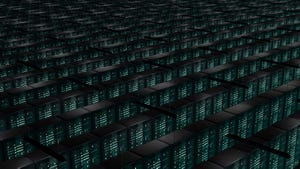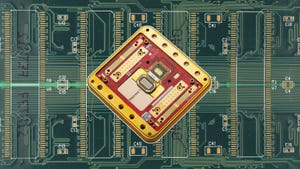Bloom Energy Files for IPO, Expects Data Center Business to GrowBloom Energy Files for IPO, Expects Data Center Business to Grow
Paperwork reveals revenue growth accompanied by losses, dependency on government incentives

Bloom Energy, whose fuel cells power Apple, eBay, Intel, and Equinix data centers by converting natural gas to electricity, has filed paperwork for an initial public offering.
In its IPO prospectus, the Sunnyvale, California-based company, whose board members include former US Secretary of State Colin Powell, former Republican Senator Kelly Ayotte, and former Cisco CEO John Chambers, revealed for the first time its annual revenue and future market growth expectations.
“We have incurred significant losses in the past and we do not expect to be profitable for the foreseeable future,” Bloom said in the document. The company lost $18 million on $376 million in sales in 2017 and $103 million on $209 million in sales in 2016.
The prospectus did not say how much Bloom was hoping to raise in its public offering.
Bloom, which was officially incorporated in 2001, manufactures a product called Bloom Energy Server, which uses solid oxide fuel cells to generate energy. The fuel cells can be fueled by natural gas or biogas.
Deploying its Energy Servers requires a lot of money upfront, and only a few big customers with deep pockets have made the commitment. Because its product is so expensive, the company admitted, its business depends on government subsidies, such as renewable energy rebates, tax credits, and other tax benefits and incentives.
Data centers are one of the key industries Bloom expects will drive its growth, in addition to general worldwide economic growth and development, which “will increasingly be powered by electricity.” The company is betting on acceleration in adoption of digital technologies, which in turn should stimulate growth in energy use.
Bloom highlighted three fast-growing market segments where it can provide significant value: data centers, healthcare, and microgrids. The company cited an estimate by the market research firm Technavio, which said data center operators worldwide spent $17.4 billion on power in 2016, $3.3 billion of which was spent in the US. Technavio expects the global figure to increase by 13 percent annually over the next five years.
But its total addressable market includes a wide range of industries, such as banking and financial services, communications and media, consumer packaged goods and consumables, education, government, healthcare, and so on. Today, Bloom is capturing only a small percentage of its existing customers' energy spend, which means there's "significant opportunity for expansion and growth."

A big rooftop customer deployment of Bloom Energy servers
The company’s 10MW deployment at an Apple data center in North Carolina in 2012 remains the largest commercial customer deployment of fuel cell technology in the US, Bloom said. Its 30MW deployment for Delmarva Power in Delaware in 2013 is the largest utility-scale deployment of the technology in the country.
As of March 2018, Bloom had a total of 300MW of generation capacity installed.
Aside from offering a cleaner energy generation solution than coal, Bloom’s pitch to data centers and other critical facilities (such as hospitals) is that its Energy Servers can be more reliable than utility grids. An eBay-commissioned study by the University of Illinois, Champaign-Urbana, found that when configured to provide mission-critical power, Bloom’s solution “would be significantly more reliable than a traditional topology of grid power plus uninterruptible power systems and diesel backup.”
eBay is one of Bloom’s most high-profile data center customers and its only customer using Energy Servers as the primary source of energy for a data center. Launched in 2013, the eBay data center in South Jordan, Utah, is powered entirely by fuel cells. Further breaking with tradition, the facility doesn’t have uninterruptible power supplies or diesel generators, instead relying on the local utility grid for backup power.
About the Author
You May Also Like







